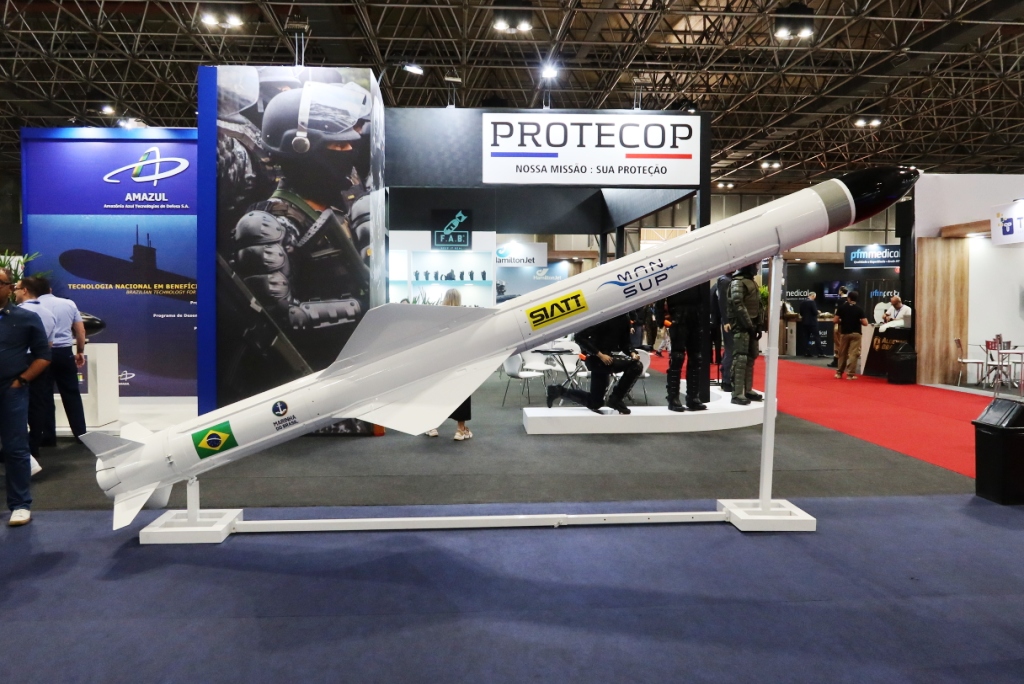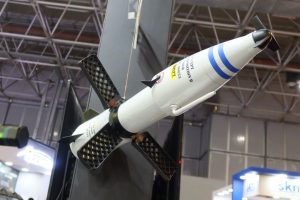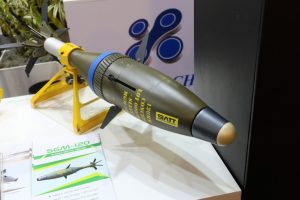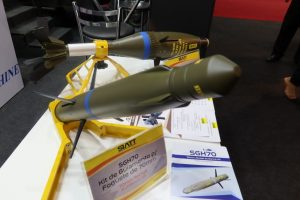
LAAD 2023 – SIATT missiles close to production while new projects are surfacing
Founded in 2017 by a team of people with a considerable background in smart weapons, SIATT is located in Sao Jose dos Campos, in the Brazilian State of São Paulo, and has recently provided the Brazilian military with pre-serial MSS 1.2 antitank and MANSUP anti-ship missiles for evaluation, which should bring to a production contract in the near future.

An over 3 km range system, the MSS 1.2 AC is a second generation missile with laser guidance, with a missile plus canister load of 24 kg, the same weight being that of the firing unit. These first missiles systems are being provided to the Army and to the Naval Infantry for trials. As for the MANSUP, which could be seen in the Brazilian Navy booth, this missile has a 70 km range and flies under an inertial guidance, its active radar homing seeker being activated in the terminal phase of the attack. Ship-launched, a first test has already been performed, while a second is scheduled immediately after LAAD. It can also be launched by land-based coastal batteries.

A new proposal is the integration of the MSS 12 AC on the Chivunk, a light 4×4 vehicle developed to meet the Brazilian Army Rapid Action Troops requirements. Developed by Columbus, a Brazilian company based in São Paulo, the vehicle is also known with the acronym VLEGA Chivunk (Viatura Leve de Emprego Geral Aerotransportável, air transportable general purpose light vehicle) and is powered by a 135 hp engine which allows a maximum speed of 120 km/h. The firing post is installed over the roll bar, two spare missiles being fitted on its sides. Total payload is 500 kg, the usual crew being made of three people.
Although two of the three projects that will follow were unveiled in late 2022, at LAAD further details were provided, a third new project emerging.

The latter is the GBSN, a guided small bomb with an overall weight of 18 kg, 6 kg being the high explosive, pre-fragmented warhead. Its navigation kit can be composed either of an inertial navigation system (INS) and a GNSS receiver, or a Semi Active Laser seeker (SALS) and an INS. Depending on launching conditions, the range varies from 5 to 18 km, CEP being less than 10 meters for the GNSS-INS bomb and 4 meters for the SALS-INS version. Totally ITAR-free, it can be launched by drones, as well as by light attack fixed- or rotary-wing assets. With a 127 mm diameter and a length of 880 mm, it features four cruciform wings at two thirds of the body that unfold after launch, as do the four control surfaces at the back of the GBSN, the rear section also hosting the electronics powered by batteries located at the centre of the bomb, the front hosting the HE warhead in a pre-fragmented body, with the fuse at the tip. A pitot tube provides air speed data to the onboard computer, while the GNSS antenna is located at the back.

The SGM-120 is SIATT proposal for a guided mortar bomb, which will also be available with two different guidance kits, GNSS-INSS or SALS-INS. Of course the company tried to exploit commonalities as much as possible, although here the SALS CEP is declared at less than 1 meter, while the GNSS accuracy remains 10 meters. Typical range is 10 km, and SIATT proposes its system both for smoothbore and rifled mortars. The four canard wings are located in the mid section and rotate backwards after launch, that section also hosting batteries, while the seeker is in the front section, which also hosts the on-board computer and communication module.

Last but not least, the SGH70 is a SALS-INS guidance kit that transforms free flight rockets in precision guided munitions. From back to front we find the battery package, the forward-folding canard wings, and the electronics, which couples with the warhead section, which at the front is fitted with a standard M427 fuse. Declared range is 10 km while SALS accuracy remains under 1 meter. The SGH70 can be fitted with Mk40 or Mk66 rocket motors.
All those three systems, currently under development, will ensure reduced collateral damages, are free of embargoes, and SIATT is ready to produce them in the customers countries.
According to what EDR On-Line was told at LAAD 2023, SIATT is currently defining the final requirements in discussions with the Brazilian Armed Forces, and plans to reach prototype trials status in around 18 months.
Photos by P. Valpolini


